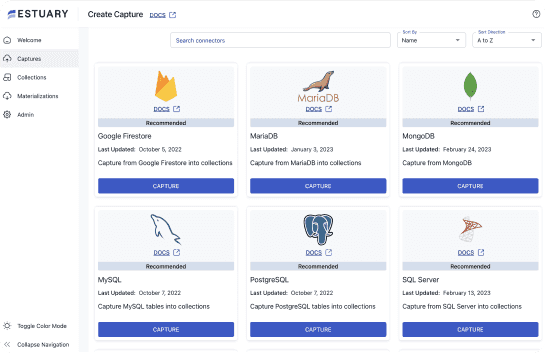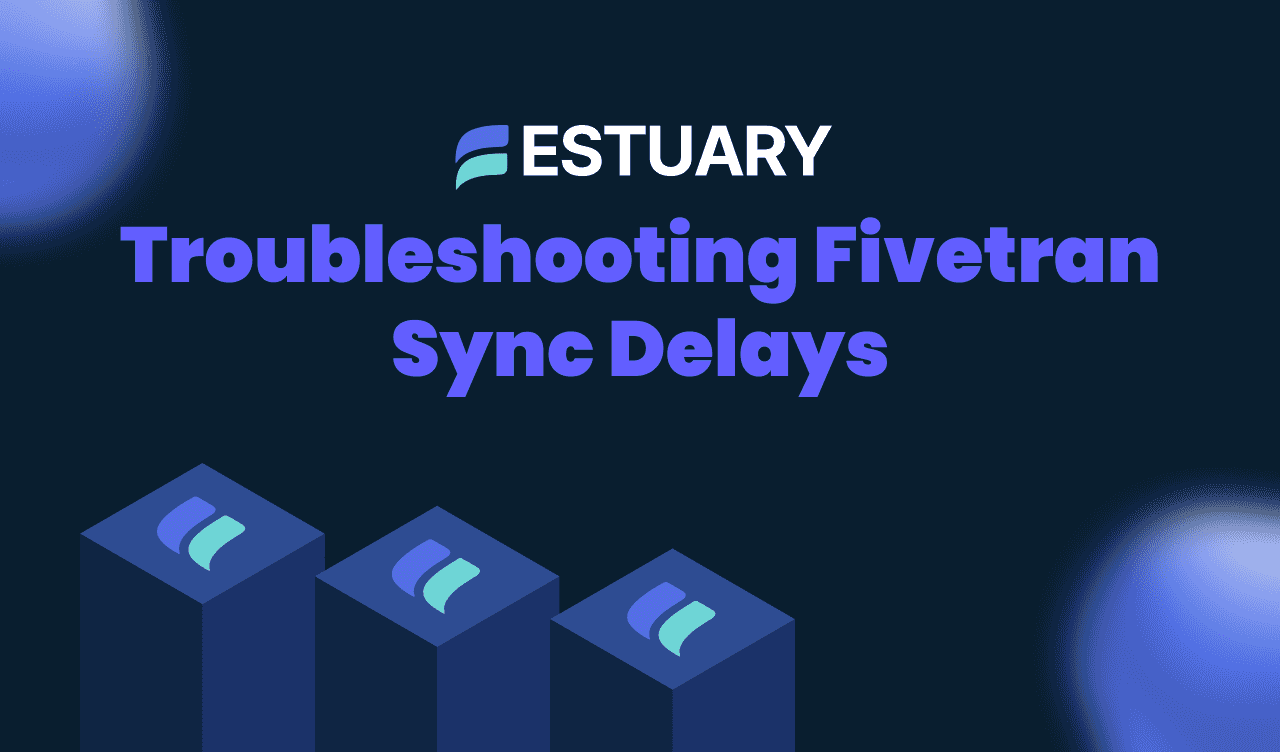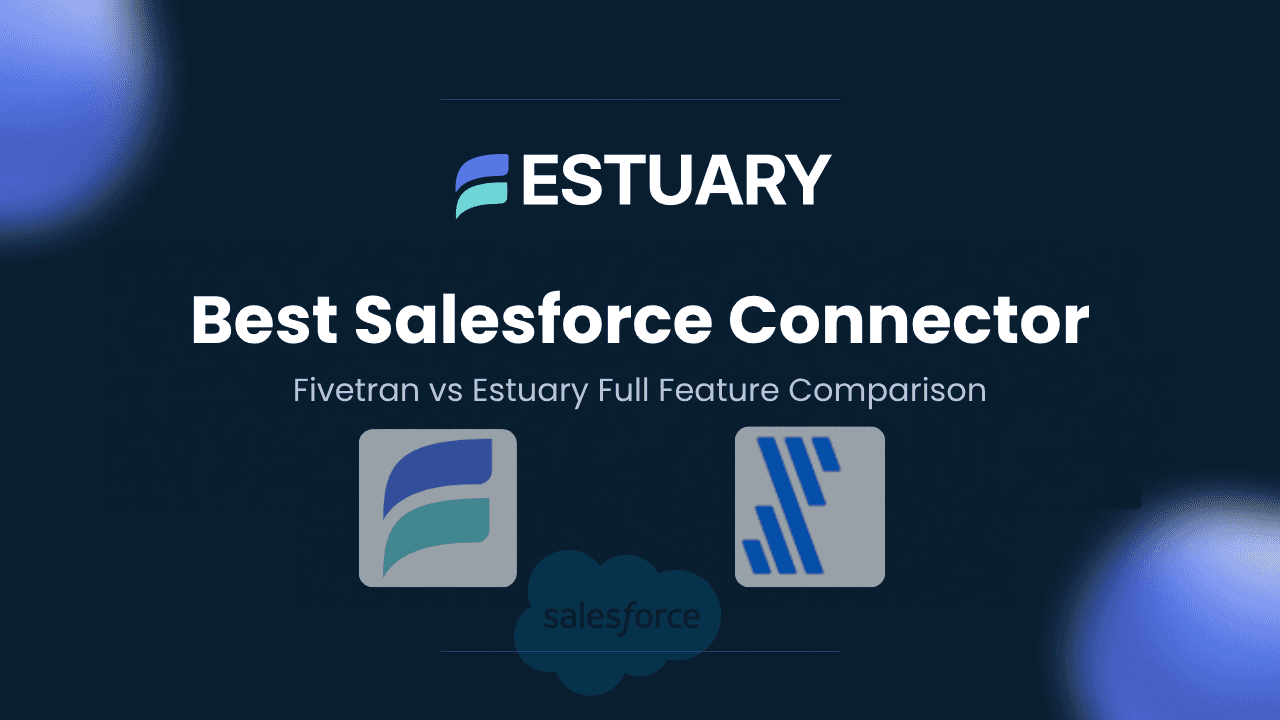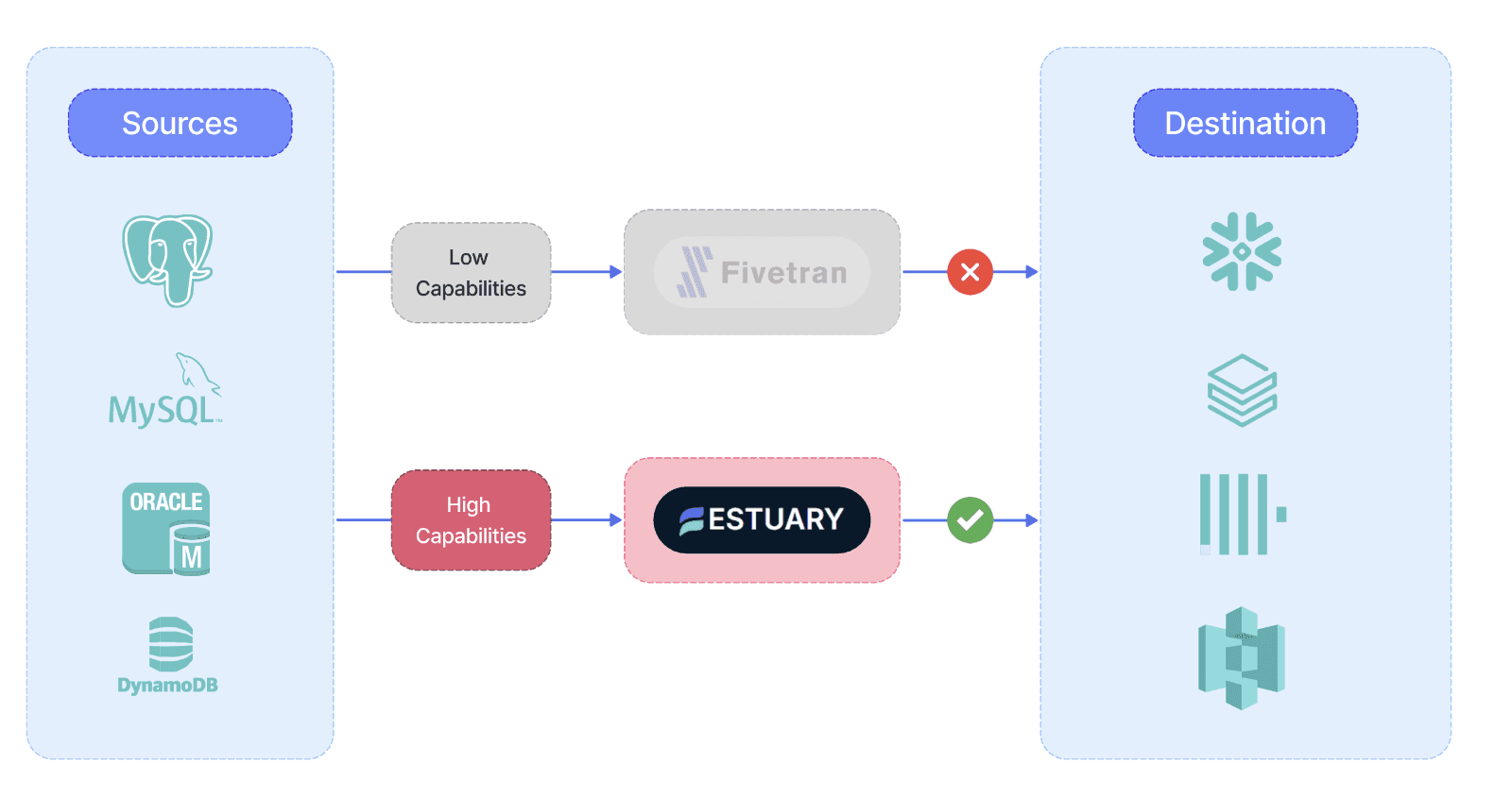
If you're a data engineer relying on Fivetran for data integration, chances are you've encountered the common scenario where your Fivetran syncs consistently take longer than the scheduled cadence, causing substantial delays or "lag" in your analytics and downstream workflows.
In this article, we'll explain why Fivetran sync delays occur, offer troubleshooting tips, and explain why a shift to a real-time data integration platform like Estuary Flow can permanently solve this issue.
Understanding the Problem: Why Fivetran Syncs Lag
Fivetran is widely used for its straightforward batch-oriented data extraction. However, this batch-based architecture inherently brings limitations. Common reasons for sync delays include:
- Batch Overlaps: Scheduled sync intervals are shorter than the sync duration itself.
- Volume Spikes: Sudden data volume increases that exceed usual processing times.
- API Rate Limits: Source systems impose rate limits, extending the extraction duration. This can lead to sync retries and Fivetran connector timeouts — a common issue that further delays ingestion and disrupts sync cadence.
- Incremental Complexity: Large, incremental extractions from rapidly changing datasets become slow and resource-intensive.
When a sync takes longer than the allotted window, subsequent syncs stack up, creating cascading Fivetran sync delays.
Symptoms of Fivetran Sync Lags
Not sure if you’re experiencing this issue? Look for these Key indicators that your syncs are lagging:
- Regularly missed SLAs for freshness.
- A consistently long "sync duration" is shown in the Fivetran UI.
- Growing data latency is impacting analytical insights and operational decision-making.
How to Troubleshoot Fivetran Sync Delays
Try these steps to diagnose and improve sync performance:
Step 1: Analyze Sync History
Review sync logs in Fivetran's dashboard:
- Identify sync duration trends.
- Look for incremental increases in data volume.
Step 2: Check Source API Limits
Ensure your source APIs aren't throttling requests. Adjust frequency if possible to alleviate pressure on source systems.
Step 3: Optimize Sync Frequency
Extend the frequency intervals to prevent overlapping syncs. While this improves reliability, it negatively impacts freshness.
Step 4: Simplify Data Extraction
Reduce incremental complexities by limiting extracted data fields or filtering irrelevant records.
While these troubleshooting tips can mitigate Fivetran sync delays, they come at the cost of reduced data freshness and analytical responsiveness.
Why Batch Syncs are Fundamentally Limited
Batch-oriented ETL tools like Fivetran inherently delay data delivery. Each batch must be fully completed before data is available for analysis, causing inevitable latency:
- Sequential Dependencies: Each batch depends on the successful completion of the previous one.
- Non-scalable Sync Frequency: Frequent batch runs cause overlapping and delays; less frequent batches reduce data freshness.
A Better Solution: Real-time Data Integration with Estuary Flow
Estuary Flow leverages continuous, event-driven streaming rather than periodic batch processing. Here's how Estuary solves Fivetran's latency issues:
- Real-time Incremental Syncs: Continuous extraction eliminates lag.
- Scalable Event-based Architecture: Automatically adjusts to data volume changes without impacting performance.
- No Batch Dependencies: Each data record moves independently, enabling low-latency analytics.
Making the Switch: From Batch to Real-Time
Migrating from batch processing to real-time data integration drastically improves data freshness and operational responsiveness. Estuary Flow provides seamless integration, minimal migration effort, and immediate operational improvement.
Learn how to migrate from Fivetran to Estuary step-by-step and start benefiting from real-time pipelines today.
Final Thoughts
Consistent sync delays in Fivetran indicate an architectural limitation rather than a performance issue. Real-time streaming platforms like Estuary Flow offer robust solutions, ensuring timely insights and better operational agility.
Ready to eliminate sync lag for good? Get started with Estuary Flow today.
FAQs
How can I fix Fivetran sync delays?
How does Estuary Flow solve this?

About the author
With over 15 years in data engineering, a seasoned expert in driving growth for early-stage data companies, focusing on strategies that attract customers and users. Extensive writing provides insights to help companies scale efficiently and effectively in an evolving data landscape.















